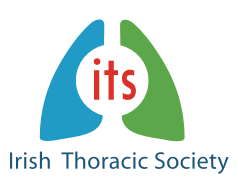PROCALCITONIN ALGORITHM IN CRITICALLY ILL ADULTS WITH UNDIFFERENTIATED INFECTION OR SUSPECTED SEPSIS. A RANDOMISED CONTROLLED TRIAL (Shehabi Y. Am J Respir Crit Care Med. 2014: 190(10):1102-10)
Link to original journal article
This study randomized 400 patients admitted with suspected bacterial infection and sepsis to either a procalcitonin algorithm to guide antibiotic duration or usual care. Procalcitonin was tested daily and the algorithm suggested ceasing antibiotic if the initial or any subsequent level was <0.1ng/ml or if the level reduced by more than 90% from baseline or if the level was borderline and infection was deemed unlikely. Antibiotics were discontinued 2 days earlier in the active arm (p=0.58). The rate of decline of procalcitonin was faster for survivors.
Final statement: A Procalcitonin based antibiotic guideline did not result in a reduction in number of antibiotic days.
A RANDOMIZED TRIAL OF PROTOCOL-BASED CARE FO EARLY SEPTIC SHOCK (Yealy Dm. N Engl J Med 2014: 370(19):1683-93)
Link to original journal article
For this study patients presenting to the ED with septic shock were randomised to an early goal-directed therapy (EGDT) including targets for CVP and ScvO2, an EGDT targeting systolic blood pressure and stroke index but not CVP or ScvO2, or non-protocolised usual care. There was no difference in mortality between the 3 arms. Protocolised care lead to more central vein catheters, blood transfusion and dobutamine whereas standard care lead to higher intravenous fluid administration.
Final statement: There was no difference in mortality between 3 different methods of managing septic shock.
HIGH VERSUS LOW BLOOD-PRESSURE TARGET IN PATIENTS WITH SEPTIC SHOCK (Asfar P et al. N Engl J Med 2014: 370)17):1583-93)
Link to original journal article
This was a multicentre trial in France that randomised 779 patients requiring vasopressors for septic shock to a MAP target of 80-85mmHg or 65-70 mmHg. Fluid resuscitation was similar between both groups, The high target group received higher vasopressor doses and 4% of these patients needed to be switched to the lower MAP target group due to adverse effects. There was no significant difference between mortality. In a subgroup analysis of chronically hypertensive patients, a higher MAP lead to less frequent renal-replacement therapy
Final statement: There was no significant difference in mortality between a high target MAP and low target MAP in patients requiring vasopressor support.
LOWER VERSUS HIGHER HEMOGLOBIN THRESHOLD FOR TRANSFUSION IN SEPTIC SHOCK (Holst LB et al. N Engl J Med 2014: 371(15): 1381-91)
Link to original journal article
The Transfusion Requirements in Septic Shocks Trial (TRISS) was a multicentre trial looking at patients with septic shock and Haemoglobin of 9g/dl. 998 were randomised to two Haemoglobin thresholds, (7g/kl or 9g/dl). Patients in the lower threshold group received fewer transfusions, and had a lower median haemoglobin level. There was no significant difference in mortality between the two groups. Rates of ischaemia also did no differ between the two groups
Final statement: In patients with septic shock and low haemoglobin there is no difference in mortality for different thresholds for transfusion.
THE EFFECT OF CORTICOSTEROIDS ON TREATMENT FAILURE AMONG HOSPITALISED PATIENTS WITH SEVERE COMMUNITY-AQUIRED PNEUMONIA AND HIGH INFLAMMATORY RESPONSE: A RANDOMIZED CLINICAL TRIAL (Torres et al. JAMA 2015: 313(7): 677-86)
Link to original journal article
This was a multicentre trial looking at 120 adult patients with high risk community acquired pneumonia (CAP) and C-reactive protein greater than 150mg/L. Patients were randomised to IV methylprednisolone 0.5mg/kg or placebo every 12 hours for 5 days. Treatment failure was defined as clinical deterioration, shock, mechanical ventilation or death within 72 hours (early) or between 72 and 120 hours (late). Treatment failure was reduced in the corticosteroid group (13% vs 31%). There was also a reduction in radiographic progression with corticosteroids, with no effect on mortality or time to clinical stability.
Final statement: Corticosteroid use in severe community acquired pneumonia had no mortality or time to clinical stability benefit.
To download a pdf of this information, please click here.
